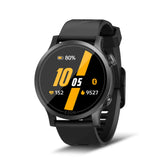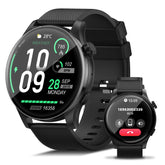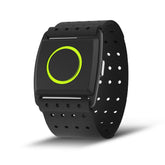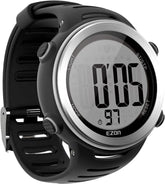Ironman Training Plan Essentials and Pacing Strategies
Training for an Ironman is a monumental challenge that demands precision, consistency, and a strategic approach to both fitness and race-day execution. At the heart of success lie two critical components: a well-structured ironman training plan and effective pacing strategies that ensure you conserve energy while maintaining momentum across the 2.4-mile swim, 112-mile bike, and 26.2-mile run. In this guide, we’ll break down the essentials of Ironman preparation and how to master pacing for each discipline.
The Foundation of an Ironman Training Plan
A robust ironman training plan typically spans 16–24 weeks, focusing on building endurance, strength, and sport-specific skills while prioritizing recovery to avoid burnout. Here’s a structured framework:
1. Base Training (Weeks 1–4)
- Goal: Build aerobic capacity and adapt to multi-sport training.
- Swim: 2–3 sessions weekly, focusing on technique (e.g., freestyle stroke efficiency, flip turns).
- Bike: Steady-state rides of 1–2 hours, emphasizing cadence (80–90 RPM) and comfort on the saddle.
- Run: Easy runs of 30–60 minutes, focusing on form and gradually increasing mileage.
- Key Tip: Include one brick session (bike-to-run transition) per week to acclimate your legs to running after cycling.
2. Build Phase (Weeks 5–12)
- Goal: Increase volume and intensity, incorporating race-pace efforts.
- Swim: Add interval training (e.g., 10x100m at race pace with 20-second rest).
- Bike: Long rides of 3–5 hours, including hill repeats and tempo intervals to simulate race-day challenges.
- Run: Introduce threshold runs (e.g., 4x20-minute efforts at Ironman marathon pace) and progressive long runs up to 16–18 miles.
- Key Tip: Schedule two brick sessions weekly to refine transitions and boost race-specific fitness.
3. Peak and Taper (Weeks 13–24)
- Peak Weeks: Execute a full-distance simulation (e.g., 2.4-mile swim, 112-mile bike, 10k run) to test nutrition and gear.
- Taper: Reduce volume by 30–40% in the final 2–3 weeks, focusing on recovery and maintaining race pace feel.
The Art of Pacing: Why It Matters in Ironman
Pacing is the difference between a strong finish and hitting the wall. Overdoing it in the swim or bike can leave you exhausted for the marathon. A pacing watch for running or multi-sport GPS device is indispensable here, providing real-time data on speed, heart rate, and effort to keep you on track.
1. Swim Pacing
- Start conservatively to avoid oxygen debt. Aim for a steady stroke rate (60–65 strokes per minute) and maintain a consistent sighting rhythm.
- Use a GPS swim watch to track lap times and ensure you’re not surging at the start—save energy for the bike.
2. Bike Pacing
- Target a sustainable wattage or heart rate zone (65–75% of FTP for cyclists, or 70–80% of max heart rate for non-power users).
- Factor in terrain: slow down on hills, but avoid overspending energy; use descents to recover slightly while maintaining control.
3. Run Pacing
- Begin the marathon at a pace 10–15 seconds slower than your standalone half-marathon pace. Gradually increase speed if you feel strong after 10k.
- Let your pacing watch for running guide you: focus on maintaining even splits rather than chasing early excitement.
Integrating Pacing Strategies into Training
1. Pace-Specific Workouts
- Swim: Perform “negative split” sets (e.g., 4x400m, each set faster than the last) to practice controlled acceleration.
- Bike: Use interval sessions like “Sweet Spot” training (88–94% of FTP) to improve sustainable power output.
- Run: Do tempo runs at your Ironman marathon pace to build familiarity with the effort level.
2. Simulate Race Conditions
- Train with the gear you’ll use on race day, including your pacing watch for runners, to ensure you’re comfortable with its data displays.
- Practice nutrition and hydration during long sessions to avoid gut issues on race day—aim for 30–60 grams of carbs per hour.
3. Monitor Recovery
- Track your resting heart rate and sleep quality with a heart rate monitor to ensure you’re not overtraining. Overtraining can disrupt pacing consistency and delay recovery.
Gear Up for Success: Essential Tools for Ironman Training
1. A Multi-Sport GPS Watch
A pacing watch for running that supports swim, bike, and run modes is non-negotiable. Features to look for:
- Accurate GPS for route mapping and pace tracking.
- Heart rate monitoring (chest strap or wrist-based) for intensity control.
- Transition tracking to practice smooth gear changes between disciplines.
2. Bike Power Meter (Optional but Valuable)
If you’re serious about pacing on the bike, a power meter provides precise data on effort, helping you maintain a steady output regardless of wind or hills.
3. Comfortable Gear
Invest in a well-fitted wetsuit (for open-water swims), aerodynamic bike gear, and lightweight running shoes that won’t cause blisters during the marathon.
Mental Resilience: The Unsung Pacing Strategy
Ironman is as much a mental battle as a physical one. When fatigue hits, trust your training and your pacing data—not your emotions. Use mantras or split goals (e.g., “Focus on the next 5k”) to break the race into manageable chunks.
Remember: consistency in training builds confidence, and confidence allows you to stick to your pace even when the going gets tough.
Race Day: Execute with Precision
On race day, stick to your plan:
- Swim: Stay calm, find your rhythm, and exit the water feeling controlled.
- Bike: Fuel regularly, monitor your power/heart rate, and save energy for the run.
- Run: Start slow, use aid stations wisely, and let your pacing watch for runners guide you to a strong finish.
Crossing the Ironman finish line is a testament to months of hard work—let your training and pacing strategies ensure it’s a celebration, not a survival.
Ready to Conquer the Ironman?
A strategic ironman training plan paired with meticulous pacing is your roadmap to Ironman success. Equip yourself with the right tools, like EZON’s pacing watches for runners designed for endurance sports, and approach each discipline with patience and purpose.
Start today, and let every training session bring you one step closer to hearing those iconic words: “You are an Ironman.”









